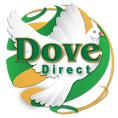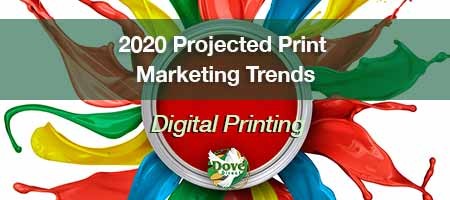Dove Direct Print and Marketing Blog - “How To Improve Brand Recall”
Welcome to the Dove Direct Print and Marketing Blog. Today's post," How To Improve Brand Recall," dives below the surface of brand recall as it relates to business presentations, marketing initiatives, and advertising strategies, to determine how to improve brand recall. As we stated in a previous post, "Does Your Brand Recall Exceed 1%?," is critical for brand longevity.
Business dictionaries define brand recall as a qualitative measure of how well a brand name connects with a product type or class of products by consumers. Often tested through surveys or interviews, brand recall is measured by asking participants questions such as "name as many car models as possible" or "can you explain what a Kleenex is?" We contend that this definition is a general overview of brand recall and one that differs from the viewpoint of a brand manager.
Brand managers typically define brand recall as playing a critical role in persuading customers to remain loyal to a brand, including purchasing the brand on a regal basis. Some brand managers also suggest that brand recall occurs when consumers buy a particular product or service, consume it, continue to hold the brand in high value, and would purchase again from that same brand; thus translating that a positive brand experience tends to spark repeat consumer purchases.
Improving Brand Recall
Nat King Cole's hit, "Unforgettable," comes to mind when speaking of brand recall. That said, every brand would love to achieve the status of being a memorable brand. We can think of brands that have reached the iconic status of unforgettable. These include Apple, Amazon, Microsoft, Google, and a host of others. You may wonder how did these brands achieve that unforgettable status.
To begin with, most brands attained that status over time. There are no magic markers to designate a brand's 'unforgettableness.' That said, brand awareness is where the journey begins, and to that point, the logo and consistent use of that logo on every piece of marketing collateral cements a brand's image, and over time, adds to the equation of establishing an iconic status.
Several factors also contribute to brand recall — factors such as building the right partnerships and associations, among customers, vendors, and communities. Again, over time, this process, when executed consistently, leads to brand loyalty, which is the impetus behind the brand recall. The logo should also be one that is unforgettable and easy to recall.
Steps to Improve Recall
Assuming that your logo is creative and effective, it should be, (1) Simple, clear, and uncluttered. People remember simple things. (2) Whatever your brand is supposed to represent, the logo should visually make that connection. (3) The logo should be consistent in each medium, from emails to websites, business cards, social media channels, videos, print collateral, and any logo assignment that is public-facing.
We also contend that you can use logo treatments after the brand's logo has been established. Google is well known for adding treatments to their logo to better accentuate a particular calendar event or marketing activity. Care should also be taken to avoid using too many logo treatments without cause in the early days of establishing brand recall.
Your brand name is critical. Your logo should reflect brand names that are easy to pronounce, unique, and compelling, along with consistent colors, which solidifies the visual statement and the brand speak.
Next is the tagline or brand slogan. For example, Nike's tagline "Just Do It," or Infinity's newest tagline, "Empower The Drive," are examples of simple, easy to remember tag lines. Therefore, your brand's tagline or slogan should also be easy to remember. However, your tagline should also be directing people to experience the brand in some manner that is competitive and makes sense for the product or service that you offer.
In the event your brand has been in the market for several years, you may want to examine the brand strategy and its recall score.
You should determine if your company has evolved to the point of requiring rebranding. Commanding the narrative of how your team would like customers to describe your organization, you will need to discern the following:
(1) What words would you prefer to represent the brand?
(2) What customer demographic is the brand trying to garner?
(3) What niche market makes the most sense for your offerings; and,
(4) Identify unique challenges that your brand can solve for customers and prospects.
Finally, by using quality images and videos, in a storytelling fashion, you can help your brand's connections with communities and demonstrate that your brand cares about the same issues as your customers and prospects.
Further, repetition can help to cement everything that represents your brand. Repeating messages across multiple platforms can help build brand credibility, increase brand audiences, and ultimately improve brand recall. Lastly, brand managers should be in the mindset of informing and teaching customers and prospects about their mission.
Now that you have a basic idea of how to improve brand recall, the next part of this article is just as important to understand, which focuses on delineating the difference between unaided and aided brand recall.
Unaided versus Aided Brand Recall
Media and brand experts will state that there are two types of brand recall categories, aided recall, and unaided recall. Aided recall typically occurs when a question includes the brand name, either as part of a subject or during the discussion. For example, aided brand recall happens when a consumer encounters a question, such as, "Do you remember the Acura Brand?" As one can see, asking about a brand by name aids the memory of the consumer.
By comparison, unaided brand recall stipulates that the consumer can remember a brand absent of brand name memory stimulation. When an unaided brand recall occurs, the brand is said to have achieved notable significance with consumers being able to recall the brand void of outside stimulus.
Brand Recall and Brand Recognition
Many brand managers are of the mind that there are two methods for analyzing brand recall. The examples mentioned above of aided versus unaided brand recall represent one way to survey brand recall.
Brand recognition, on the other hand, refers to consumers seeing a brand, for example, in a movie where the brand is placed in a scene, such as a Pepsi bottle or can, or an action sequence, that features an Audi. After that, when a consumer visits a supermarket and strolls down the beverage aisle, the Pepsi brand will stand out among the other soda brands. This type of brand recognition also occurs when the consumer enters the buying cycle to purchase a new automobile, and they recall how cool the Audi looked on the big screen, thus prompting them to include an Audi dealership in their vehicle search.
Brand recall is a different beast when compared to brand recognition, as brand recall does not originate from external stimuli. Some would argue that brand recall cannot exist without brand recognition. As far as consideration of iconic brands, that statement could hold, mainly when measured against sales and marketshare. However, mid-size and enterprise-sized brands, while not considered iconic, can exhibit high brand recall for their market niche.
How about that favorite pet groomer that can retain and grow simply from folks who have experience with the brand? What about online businesses that offer top-notch customer services and continue to expand their customer base? We contend that the brand experience plays a significant role in elevating brand recall. In short, those examples represent both brand recognition and brand recall based on customer experiences.
Unaided Brand Recall Depends On Memory
Marketshare, brand equity, and competitive awareness all rely on what consumers can remember about a brand. The ability for brands to command memorable experiences is critical for business and sales objectives. Why? Customers arrive at positive brand decisions based on what they can recall, versus what they have forgotten. Would you be surprised to learn that in business contexts, folks tend to be more forgettable than they are memorable?
Carmen Simon is the author and founder of Memzy, a company that uses brain science to help corporations create memorable messages. Simon's most recent book, "Impossible to Ignore: Create Memorable Content to Influence Decisions," has won the acclaim of publications such as Inc.com, Forbes and Fast Company, and has been selected as one of the top international books on persuasion.
Simon states, "Using EEG (electroencephalogram) technology, we can detect what happens in the brain when exposed to a business presentation, and during studies we conduct monthly with corporate teams, we observe that people retain less than 1% of business content after 48 hours."
1% and 1%
In previous posts, we expounded on the 1% Thin Theory which stipulates that within any group of marketed targets, only 1% of those targeted are looking for the product or service at the moment they receive the advertising message. It's unclear whether that 1% actually needs the product, or if there is some effect as a result of brand recall, or brand recognition that also plays a role. Now consider Simon's postulate suggesting that people only retain 1% of business content 48 hours after exposure to that content.
Print Improves Brand Recall
Brands and marketers have to improve sales numbers and be able to implant brand recall as part of the overall objective of marketing strategies. With folks forgetting content at the rate of a 1% retention clip rate, it should come as no surprise that analyzing available marketing and advertising mediums for the best brand recall is of paramount concern.
In a digital is everything age, print rises to the top of memory retention and brand recall. Through print collateral, increased information is absorbed simply by reading printed documents; as readers tend to consume more as they are more deliberate, taking time to take in and understand the information.
Conversely, when folks read via online destinations, they skim through the content and are often disrupted by incoming messages. As a result, they often miss valuable information and may dismiss the communications entirely before understanding the material.
Memory retention represents a considerable drawback for brand recall. Print media provides a platform that enables readers to focus better, relax, and slow down. As a result, folks that are reading printed materials tend to achieve improved comprehension and memory retention over those who read the same content on a web site, social media, or email. The tactile experience of touching and manipulating pages makes connections between abstract concepts and the content in print. In short, print stimulates memory retention of consumed content.
The Net-Net
Once one considers the myriad of ways to improve brand recall, one should be able to engage in brand recall strategies that will increase the brand's visibility. As digital and the IoT push the content envelope, marketers will continue to debate the best methods to develop and maintain brand recall. Therefore, it's critical that marketers develop strategies that spark joy, deliver positive experiences, and provide lasting benefits. Thanks for reading, "How To Improve Brand Recall."
Let's have a conversation about direct mail strategies, printing, print software, transactional documents, variable digital printing, brand equity and unified marketing collateral during our next Open House. We invite you to join us for an hour or two, September, 26, from 10:30 am to 4:30 pm. Let us show you how to improve your document processes to optimize your workflow, reduce your costs, and maximize your organization's printing, letter shop and mailing capabilities. Dove Direct does have an official USPS certified bureau located within our offices that will save you time and money. And, if you bring us your files, we will create a demo file for you. For more information call Carla Eubanks at 404-629-0122 or email Carla at This email address is being protected from spambots. You need JavaScript enabled to view it..
Dove Direct, your Atlanta based print and mail solutions provider offers organizations end-to-end data, printing and mailing solutions: Data Management, Variable Digital Printing, LetterShop and Fulfillment, Fully Automated MLOCR Presort Bureau, Marketing and Production Management Support and Secure Data Life Cycle Management.
If you don't want to wait for the Open House, you can reach Dove Direct today by calling 404-629-0122 or use the contact form for Dove Direct.





